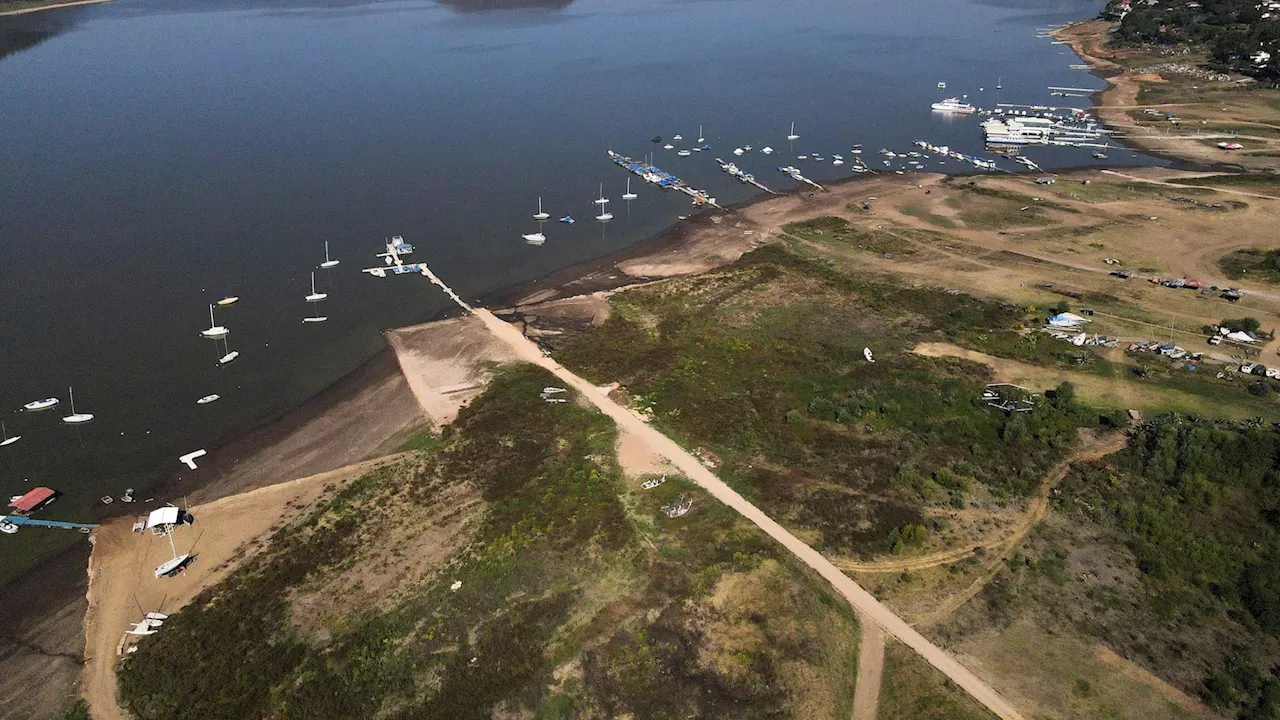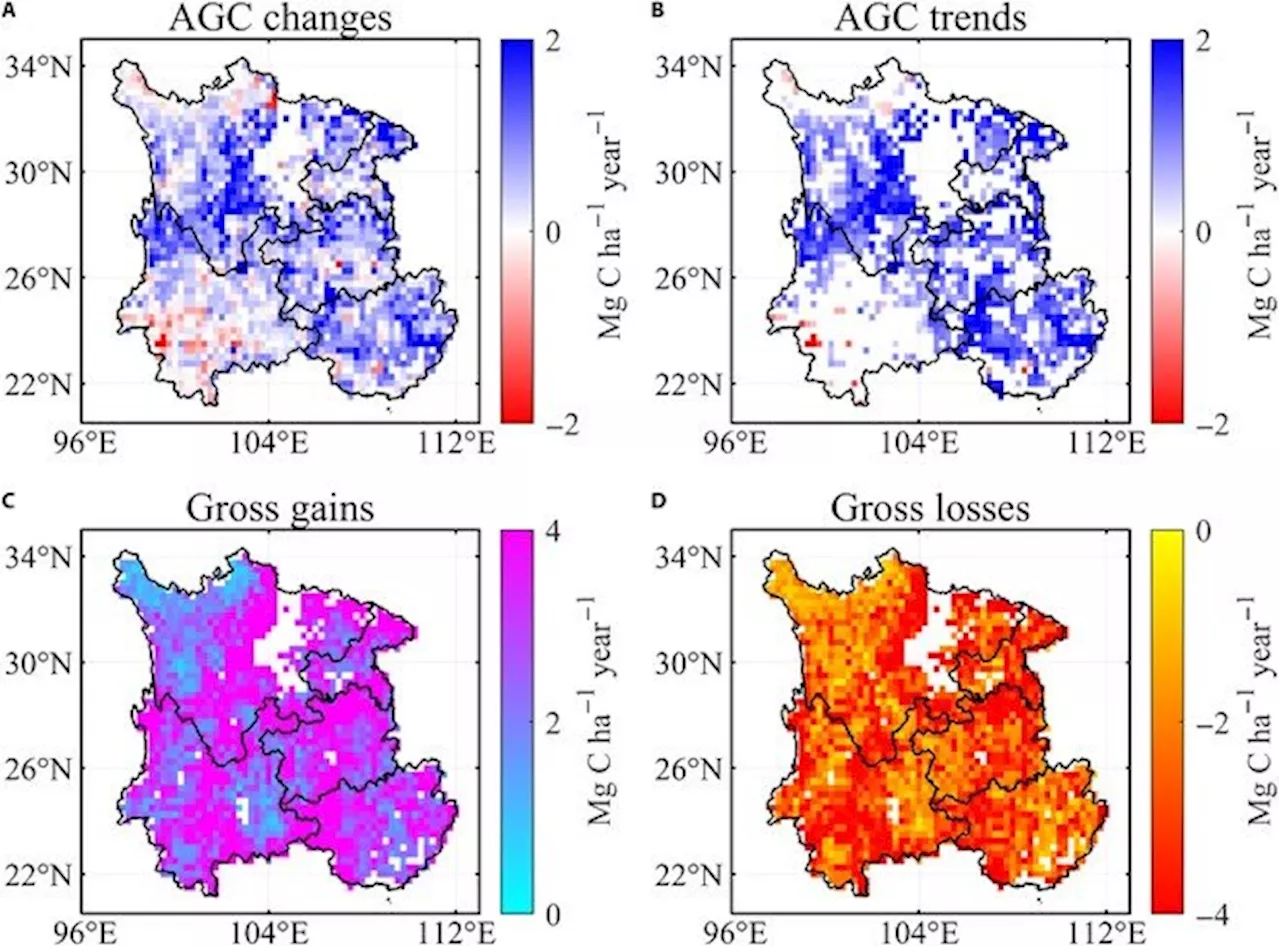As the world warms from human-caused climate change, fresh water for drinking, cooking and cleaning is becoming harder to get for many people
. That’s because the warming world is leading to erratic rainfall patterns, extreme heat and periods of drought — on top of decades of bad water management and extractive policies around the world. The United Nations estimates that around 2.2 billion people worldwide don't have access to safely managed drinking water. This World Water Day, Associated Press journalists from around the world interviewed some of the people struggling to get fresh water.
Justina Flores, a 50-year-old grandmother, lives in a hilly Lima, Peru, suburb with no running water. With some of the water she gets from the government, she washes the clothes of her family of six by hand, and then reuses it to wash the dog or dumps it on the ground outside to keep the dust from coming up and into her house. Peru’s government gives potable water to 1.5 million of its poorest residents, like Flores, living in the hills.
In the vast archipelago nation of Indonesia, access to clean water is uncertain — even in the country’s most-developed city of Jakarta, where over 10 million people live. Since she was a young girl, Devi Putri Eka Sari, now a 37-year-old mother of three, has had to buy water from the vendors going up and down the narrow paved streets in her lower-income neighborhood — even after the government installed water pipes and pumps pulling water from the ground.
Joyce Mule used to walk for about two hours to find water. In her hilly and rocky village in Makueni County in dry southeastern Kenya, water is very scarce. There’s little piped water and few reliable alternatives. One way Mule used to get water was through scoop holes in sandy riverbeds. These work by people digging into the sand and water held in pore spaces percolating out of the adjacent sand into the hole. This method is still popular in southeastern Kenya.
Ramkrishan Malawat, 52, remembers a time when groundwater was just 21 meters below surface level and a fast-flowing river 10 kilometers away from his farm in Bawal, near New Delhi, provided abundant water. But now the river has run dry and water is 76 meters below ground. “We are forced to dig deeper with every passing year,” he said. Malawat uses a borewell to get water for his crops: mustard, corn and various millets.
United Kingdom Latest News, United Kingdom Headlines
Similar News:You can also read news stories similar to this one that we have collected from other news sources.
 Vietnam farmers struggle for fresh water as drought brings salinizationEvery day, farmer Nguyen Hoai Thuong prays in vain for rain to fall on the cracked dry earth of her garden in Vietnam's Mekong Delta—the country's 'rice bowl' agricultural heartland.
Vietnam farmers struggle for fresh water as drought brings salinizationEvery day, farmer Nguyen Hoai Thuong prays in vain for rain to fall on the cracked dry earth of her garden in Vietnam's Mekong Delta—the country's 'rice bowl' agricultural heartland.
Read more »
 Drought, heat and mismanagement make getting fresh water an increasingly tough taskAs the world warms from human-caused climate change, fresh water for drinking, cooking and cleaning is becoming harder to get for many people. That's because the warming world is leading to erratic rainfall patterns, extreme heat and periods of drought — on top of decades of bad water management and extractive policies around the world.
Drought, heat and mismanagement make getting fresh water an increasingly tough taskAs the world warms from human-caused climate change, fresh water for drinking, cooking and cleaning is becoming harder to get for many people. That's because the warming world is leading to erratic rainfall patterns, extreme heat and periods of drought — on top of decades of bad water management and extractive policies around the world.
Read more »
U.S., Mexico fight over Rio Grande water; Texas drought woes growA fight between the U.S. and Mexico over Rio Grande water is adding to Texas’ ongoing drought problems.
Read more »
 Mexican lake is being sucked dry by development, drought and lawlessnessOnce a glittering weekend getaway for wealthy residents of Mexico City, Valle de Bravo has been reduced to a shrinking muddy puddle by a combination of drought, water transfers to the capital, bad planning and lawlessness
Mexican lake is being sucked dry by development, drought and lawlessnessOnce a glittering weekend getaway for wealthy residents of Mexico City, Valle de Bravo has been reduced to a shrinking muddy puddle by a combination of drought, water transfers to the capital, bad planning and lawlessness
Read more »
 Satellite data unlocks drought impact on southwest China's carbon cycleOver the past four decades, Southwest China has been a major carbon sink, significantly mitigating anthropogenic CO2 emissions. However, recent severe droughts, especially from 2009 to 2013 and in 2022, have drastically reduced its carbon absorption capacity by affecting vegetation and biomass.
Satellite data unlocks drought impact on southwest China's carbon cycleOver the past four decades, Southwest China has been a major carbon sink, significantly mitigating anthropogenic CO2 emissions. However, recent severe droughts, especially from 2009 to 2013 and in 2022, have drastically reduced its carbon absorption capacity by affecting vegetation and biomass.
Read more »
 Drought, soil desiccation cracking, and carbon dioxide emissions: an overlooked feedback loop exacerbating climate changeSoil stores 80 percent of carbon on earth, yet with increasing cycles of drought, that crucial reservoir is cracking and breaking down, releasing even more greenhouse gases creating an amplified feedback loop that could accelerate climate change.
Drought, soil desiccation cracking, and carbon dioxide emissions: an overlooked feedback loop exacerbating climate changeSoil stores 80 percent of carbon on earth, yet with increasing cycles of drought, that crucial reservoir is cracking and breaking down, releasing even more greenhouse gases creating an amplified feedback loop that could accelerate climate change.
Read more »
